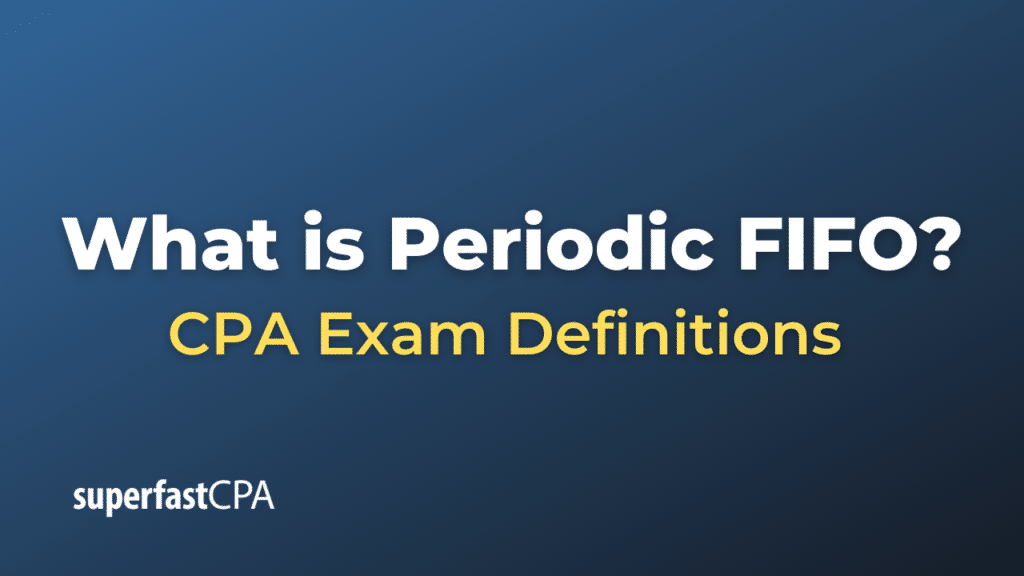Periodic FIFO
Periodic FIFO (First In, First Out) is an inventory valuation method used in accounting. As the name suggests, it’s used in the context of a periodic inventory system, which updates inventory counts and costs only at the end of each accounting period (like a month, quarter, or year).
Under the FIFO method, it’s assumed that the oldest inventory items are sold first, while the newest items remain in inventory. However, this does not necessarily represent the physical flow of goods; it’s an assumption to calculate cost of goods sold (COGS) and ending inventory.
In a periodic inventory system, you don’t keep track of inventory on a daily basis. Instead, you conduct a physical count of inventory at the end of the period and calculate COGS based on that count and the FIFO cost assumption.
Let’s break down how Periodic FIFO works:
- At the end of the period, you perform a physical count of your remaining inventory.
- Then you calculate the cost of the ending inventory by assuming that the most recent purchases make up the ending inventory.
- After determining the cost of the ending inventory, you subtract it from the cost of goods available for sale (beginning inventory + purchases during the period) to calculate the COGS.
The Periodic FIFO method can be simpler to implement than the perpetual system, as it doesn’t require constant tracking of inventory. However, it may not provide the most accurate picture of inventory levels and COGS during the accounting period, as it only updates these figures at the end of the period.
Example of Periodic FIFO
let’s say a grocery store buys oranges at the beginning of the week and at the end of the week. They use the periodic FIFO method to manage inventory.
Here’s their purchase and sales record for the week:
- Beginning inventory: 100 oranges @ $0.50 each = $50
- Purchase on Wednesday: 200 oranges @ $0.60 each = $120
- Sales from Monday to Sunday: 250 oranges.
On Sunday night, they count the remaining inventory and find 50 oranges left.
Here’s how they calculate their Cost of Goods Sold (COGS) and Ending Inventory using the Periodic FIFO method:
- Determine Ending Inventory: Since FIFO assumes the first items in are the first items sold, the ending inventory would consist of the most recently purchased items. So, the 50 oranges left would be from the Wednesday purchase @ $0.60 each.
Ending Inventory = 50 oranges * $0.60/orange = $30 - Determine Cost of Goods Sold (COGS): Now, subtract the ending inventory from the total cost of goods available for sale to get COGS.
Total cost of goods available for sale = Beginning inventory + Purchases = $50 (from beginning inventory) + $120 (from Wednesday purchase) = $170
COGS = Total cost of goods available – Ending inventory = $170 – $30 = $140
So, according to the periodic FIFO method, the COGS for the week is $140, and the ending inventory is $30.
Remember, this is an accounting assumption. In reality, some of the oranges sold could have come from either the beginning inventory or the Wednesday purchase. But for accounting purposes, the grocery store assumes that the first oranges sold were from the beginning inventory.













